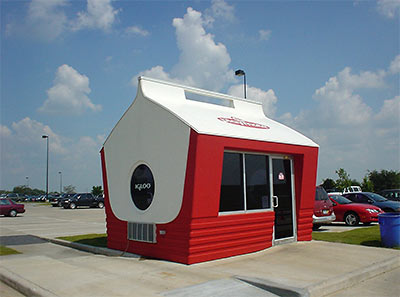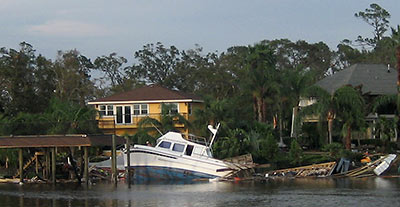THE GIFT OF BENZENE What’s that faint, slightly sweet smell in the air? More from Chris Vogel’s report on Houston’s industrial emissions: “According to the City of Houston, a six-month survey in 2008 showed that six out of seven air monitors near the ship channel detected benzene levels above what the EPA says can cause cancer in ten out of every million people. That’s ten times higher than what is considered an acceptable risk. ‘Until recently I didn’t even know they were releasing any benzene into the atmosphere,’ says Dr. Charles Koller, a leukemia specialist at MD Anderson. ‘It’s shocking to me. It seems, frankly, criminal.’ It can take more than ten years for anemia to develop in someone who has been exposed to benzene, says Koller, and even longer for leukemia. A person also needs to be genetically susceptible. ‘We don’t know how susceptibility works,’ he says, ‘we just know that it works.’ . . . ‘Once benzene gets in the air,’ [Koller] says, ‘it’s everywhere. So even in Katy, there’s someone who, if they’re susceptible, will get [sick] from what’s going on in the Houston Ship Channel.’” [Houston Press]
Tag: Industrial Pollution
HOW THE TCEQ HELPS HOUSTON AIR STAY SO FRESH AND CLEAN Combing through emissions reports for 20 local refineries and chemical plants from February 2003 through October of this year, reporter Chris Vogel notes how the peculiar accounting method employed by the Texas Commission on Environmental Quality seriously underrepresents Houston-area emissions events: “In slightly more than six and a half years, the 20 plants pumped out 4,864,730 pounds of sulfur dioxide, 452,080 pounds of carcinogens and a total of 20,716,547 pounds of pollutants during emission events . . . The Press discovered that individual chemicals at the 20 facilities exceeded the limit 12,701 times during the six and a half years. [But] TCEQ documents obtained through an open records request for the 20 plants show that the agency found 469 violations over the past six and a half years, 240 of which listed excess pollution during an emission event as the reason. Those 240 violations represent less than 2 percent of the number of times that individual pollutants exceeded their limit during emission events. Many people, including former TCEQ Commissioner Larry Soward, see this as one of the ways TCEQ gives industry a big break.” [Houston Press]
FAILING THE PARTICLE BOARD REVIEW Levels of soot in Houston now exceed the EPA’s longstanding annual limit: “The area of concern is along the Ship Channel, the only place in Texas where levels of the tiny particles surpassed the EPA’s annual limit from 2006 to 2008, according to the most recent data available. The agency uses a three-year average to determine whether an area is in compliance. Monitoring shows air near the Ship Channel is getting cleaner, thanks in part to new rules for idling trucks and the paving of gravel parking lots. But EPA and local officials don’t know whether the improvements will be enough to drop the rolling average below the annual limit of 15 micrograms per cubic liter of air, since that average includes higher 2006 levels.” [Houston Chronicle; previously on Swamplot]
COMMENT OF THE DAY: IT’S WHAT’S INSIDE THAT COUNTS “Houston ugly? Hell no. Houston is real. Houston has the testicular fortitude to manufacturer [goods] and chemicals that everybody wants but no one wants made near them. Same with Beaumont, Port Arthur, Lake Charles, Baton Rouge…..I’ll take Houston gladly over cities that are completely obsessed with looking good. . . .” [kjb434, commenting on Smaller Signs in Houston’s Future]
COMMENT OF THE DAY: SULTRY, SCENTED HOUSTON SUMMER SCENE “Love the big cushy sofa in the Armature Works backyard. Imagine reclining there on a sultry Houston summer evening, cold beer in hand, brownfield perfume transporting the senses, viewing the sunset while the humid dusk lights the multicolored drums in a scene worthy of a Thiebaud.” [Miz Brooke Smith, commenting on Daily Demolition Report: Broken Armature; photos]
SOOT’S US Some public-health and environmental groups are complaining that Houston isn’t getting enough respect for the particularly fine quality of the air here, and are asking the EPA to give this city the recognition it deserves: “Houston’s concentrations of soot — a piercing mix of airborne matter from diesel exhaust, industrial flares and road grit, among other sources — exceeded the EPA’s yearly standards from 2005 to 2007, according to the most recent federal data available. . . . ‘Residents of Houston are breathing unhealthy levels of soot pollution,’ [the NRDC’s John] Walke said in an interview this week. . . . Soot has been a special concern near the Houston Ship Channel, which is home to heavy industry and a busy port. It’s the only place in Texas where the particulate-matter levels exceed the annual standard.” [Houston Chronicle]

Ready to see some fun pix from around town? Here’s the guardhouse for the loading dock at the Igloo plant in Katy, as captured a while back by blogger Donna B.
A few more:

A note from the City of Taylor Lake Village:
Taylor Lake is closed to recreation – swimming, boating, fishing, and water skiing. The Gulf Coast Waste Disposal Authority industrial wastewater treatment plant on Port Road was inundated during the storm and its ponds of untreated industrial and sanitary waste overflowed into Taylor Lake. The Lake may be contaminated with industrial pollutants (volatile organic and other compounds) and bacteriological contaminants. Residents should avoid all contact with Taylor Lake water until further notice.
Any other area industrial pollutants gone AWOL after Ike? Where did they end up?
- Hurricane Ike Update [Taylor Lake Village]
Photo of house and damage on Taylor Lake: Flickr user Linda Railsback

